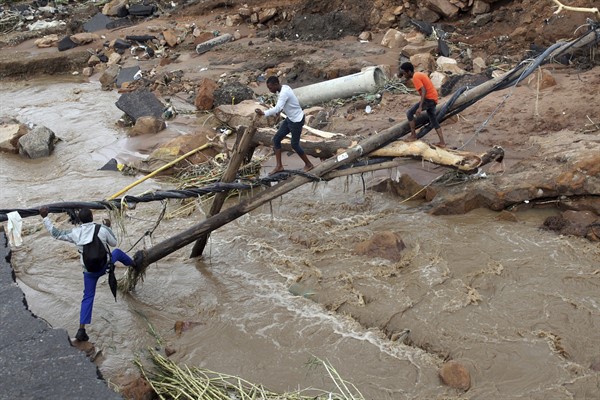South Africa is grappling with one of the most devastating floods in the country’s history. Several days of heavy rainfall in the coastal city of Durban and its surrounding KwaZulu-Natal province have left more than 400 people dead, 4,000 homes destroyed and 40,000 people displaced, according to local officials. Many locals have gone missing, while the damage to property and infrastructure continues to run into the billions. President Cyril Ramaphosa has declared a national state of disaster and deployed troops to help rebuild collapsed roads and bridges and to manage search and rescue efforts, including the delivery of food, water and clothing to flood victims. In addition, South Africa’s government has announced that it will partially finance the reconstruction efforts by tapping into funds allocated to its national COVID-19 Solidarity Fund, which was created to help South Africa fight the coronavirus pandemic.
The floods bring into sharp focus the national, regional, continental and indeed global effects of climate change. A recent report by the United Nations’ Intergovernmental Panel on Climate Change published earlier this month indicates that the window of opportunity for action is closing fast, and that African countries are particularly vulnerable to the threat of climate change. In a recent piece for WPR, I noted that the 4,000-mile coast of West Africa, stretching all the way from Mauritania to Cameroon, is especially vulnerable to the impacts of rising sea levels, including erosion and flooding.
The port city of Durban has experienced flooding events annually in recent years. And in neighboring Mozambique, Zimbabwe and Malawi, extreme weather events have killed scores of people over the past few years, while devastating the lives of many more. Meteorologists in South Africa have insisted that the recent storms were not tropical, but are part of a normal South African weather system called a “cut-off low,” which brings heavy rain and cold weather. Still, they nonetheless warned that atmospheric changes will bring unpredictable, extreme weather events in the coming years.

